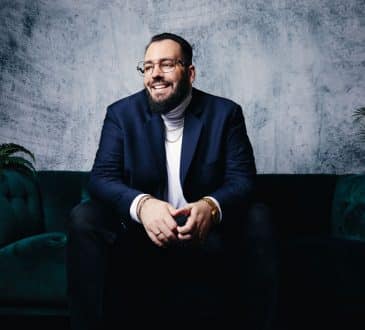The Arab World’s Hidden Wealth

Upstream Women: In popular culture, the Arab world is fundamentally associated with natural resources, often crude oil and natural gas. Indeed, they helped bring vast wealth to some parts of the Arab world – but most unevenly and sometimes temporarily. It’s easy to forget these days, but Yemen was once a significant oil exporter that established a modicum of stability through the patronage that it afforded.
Nevertheless, the Arab world has a more widely distributed potential source of fairly vast wealth, namely the productive and entrepreneurial potential of Arab women. Much like crude oil, it can help balance budgets, bring in foreign currency, significantly increase GDP, add geopolitical weight, and proliferate trade networks across the world.
Currently, much of it stands in the ground. For comparative example, the female labor participation rate is 63% for China, 54.2% for Japan, 52.69% for South Korea, and 67.86% for Vietnam. Meanwhile, in the Arab world, figures are quite different: 15.34% for Egypt, 14.8% for Syria, 17,13% for Algeria, and 10.76% for Iraq.
Overall, only about 22% of working-age Arab women are involved in the labour force – compared to a global average of 43%, and the highest figures registered, 34.45% for Saudi Arabia, 29.35% for Lebanon and 55.31% for the United Arab Emirates – are nowhere near enough to pull up the average.
That means just about one out of five women’s work is accounted for in GDP.
This does not imply that unaccounted work doesn’t matter – far from it. But in many cases, at least historically, this reflected not an optimal choice but the lack of skills and opportunities.
But that is changing.
The Middle East’s Other Revolution
Currently, 54% of South Korea’s female labour force has attained at least an intermediate level of education while only 9% of Jordan’s have. Employment opportunities will differ. Likewise, 98% of Japanese women and 85% of Iranian women own a bank account of some sort while less than 25% of Egyptian women do.
On the bright side, the Middle East is undergoing a quieter sort of revolution. Much of the statistics above are a static snapshot of rapid transformation – in 2011 only about 6% of Egyptian women had something resembling their own bank account, implying an almost 5-fold increase in slightly over a decade.
Much of that revolution is secular in nature and can be correlated with the Middle East’s “youth bulge”, a cause of some social instability at times but also a driving force for many social changes that could help unlock the economic potential of Arab women. The 55% of the Middle East who are under 30 may represent the generation which actually uses the Arab world’s hidden wealth.
Indeed, across the Arab world, a transformational wave is reshaping the entrepreneurial scenery – and at its forefront are Arab women. Many of these women are breaking barriers, challenging any remaining stereotypes, and emerging as a powerful force in the business arena at a historically unprecedented speed.
According to McKinsey, a key change towards this came over a decade ago when governments began investing in women’s education, reaching a degree of parity in educational outcomes.
With increased access to quality education, Arab women are acquiring the knowledge and skills needed to successfully navigate both the world of business and the labour market itself. Beyond conventional roles, Arab women entrepreneurs hold degrees across diverse disciplines, including science, technology, business, and the arts, contributing to a more versatile and innovative entrepreneurial landscape.
False Barriers
Needless to say, there are still barriers to the full integration of Arab women in the labour force and the business world. But they might be a lot less insurmountable than conventional wisdom allows for.
In a paper from 2022, Tertilt, M. et al. (2022) The economics of women’s rights, a global map of women’s rights shows developments over the past 50 years. It’s easy to see how the Arab world is not so much a permanent outlier but simply where South America might have been in the 1990s or Southern Europe in the 1960s and 1970s. There is in fact little to suggest that civilizations in the Middle East are so structurally apart from the rest of the world as to create a permanent outlier to this general trend. That trend in turn has shown that productive employment of women can bring higher rates of growth, spur business development and aid economic development.
Furthermore, much of it can be seen as a virtuous cycle, as outlined in a 1990 paper, Blau, F.D. and Ferber, M.A. (1990) Women’s Work, Women’s Lives: A Comparative Economic Perspective. Higher rates of employment lead to a higher return to educating women, which leads to higher returns on that employment, which leads to higher opportunity costs of other activities as well as higher bargaining power, which leads to greater employment opportunities and higher rates of employment, repeating the cycle.
Once in motion, it very much takes a life of its own. The Middle East quiet revolution is doing just that, unlocking the Arab world’s hidden wealth.
Takeaway
The Arab world’s demographic transformation brings with it a transformation in social attitudes. That change in turn has set in motion a virtuous cycle of women’s economic empowerment that is changing the region and unlocking a tremendous potential source of growth, development, and wealth.
Have you read?
The World’s Richest People (Top Billionaires, 2024).
Best and worst U.S. states to raise a family, 2024.
The Global Mobility Index: These Are the World’s Most Powerful Passports in 2024.
World’s Most Influential and Innovative Companies, 2024.
World’s Most Influential CEOs And Business Executives Of 2024.
Bring the best of the CEOWORLD magazine's global journalism to audiences in the United States and around the world. - Add CEOWORLD magazine to your Google News feed.
Follow CEOWORLD magazine headlines on: Google News, LinkedIn, Twitter, and Facebook.
Copyright 2025 The CEOWORLD magazine. All rights reserved. This material (and any extract from it) must not be copied, redistributed or placed on any website, without CEOWORLD magazine' prior written consent. For media queries, please contact: info@ceoworld.biz








